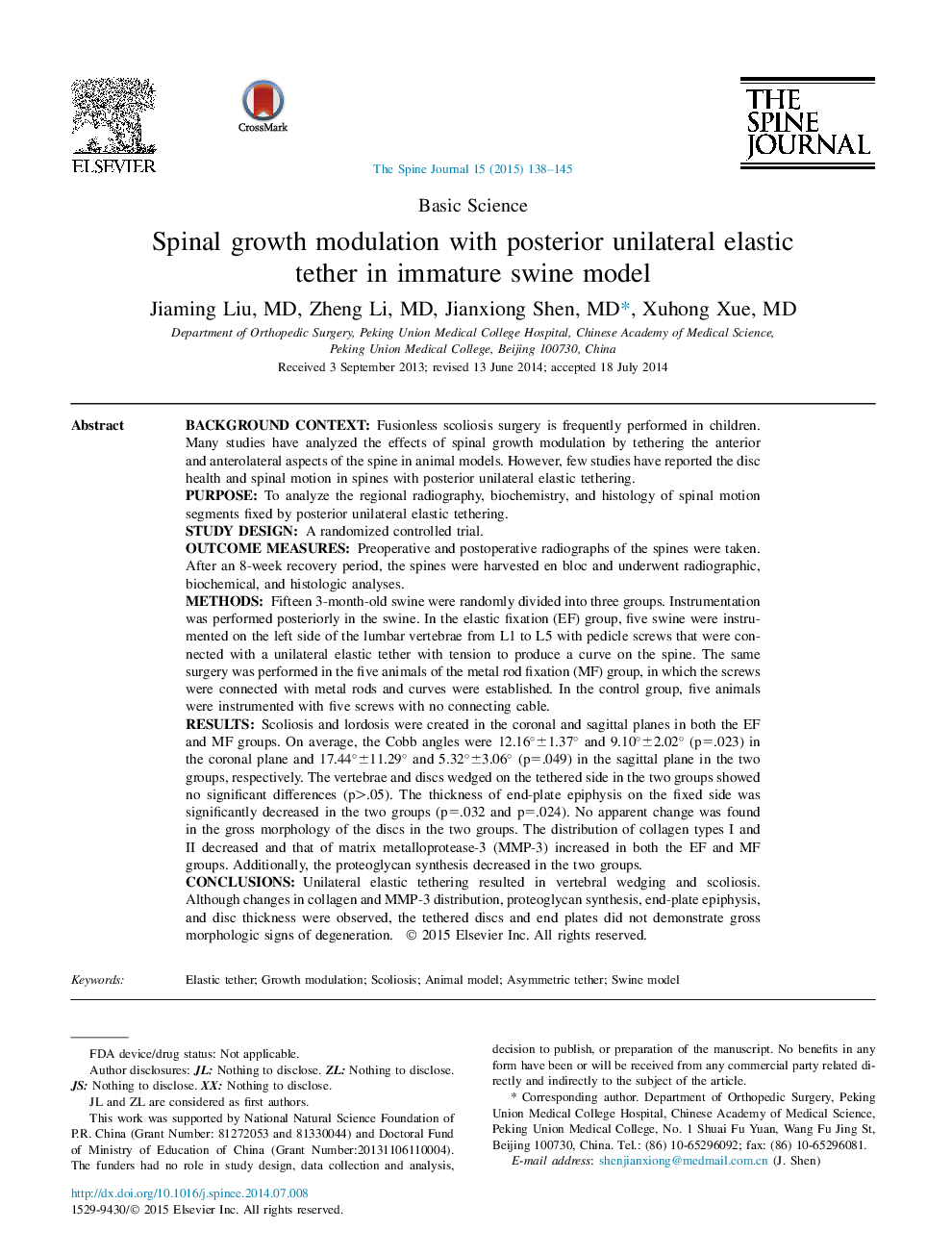| Article ID | Journal | Published Year | Pages | File Type |
|---|---|---|---|---|
| 4096511 | The Spine Journal | 2015 | 8 Pages |
Background contextFusionless scoliosis surgery is frequently performed in children. Many studies have analyzed the effects of spinal growth modulation by tethering the anterior and anterolateral aspects of the spine in animal models. However, few studies have reported the disc health and spinal motion in spines with posterior unilateral elastic tethering.PurposeTo analyze the regional radiography, biochemistry, and histology of spinal motion segments fixed by posterior unilateral elastic tethering.Study designA randomized controlled trial.Outcome measuresPreoperative and postoperative radiographs of the spines were taken. After an 8-week recovery period, the spines were harvested en bloc and underwent radiographic, biochemical, and histologic analyses.MethodsFifteen 3-month-old swine were randomly divided into three groups. Instrumentation was performed posteriorly in the swine. In the elastic fixation (EF) group, five swine were instrumented on the left side of the lumbar vertebrae from L1 to L5 with pedicle screws that were connected with a unilateral elastic tether with tension to produce a curve on the spine. The same surgery was performed in the five animals of the metal rod fixation (MF) group, in which the screws were connected with metal rods and curves were established. In the control group, five animals were instrumented with five screws with no connecting cable.ResultsScoliosis and lordosis were created in the coronal and sagittal planes in both the EF and MF groups. On average, the Cobb angles were 12.16°±1.37° and 9.10°±2.02° (p=.023) in the coronal plane and 17.44°±11.29° and 5.32°±3.06° (p=.049) in the sagittal plane in the two groups, respectively. The vertebrae and discs wedged on the tethered side in the two groups showed no significant differences (p>.05). The thickness of end-plate epiphysis on the fixed side was significantly decreased in the two groups (p=.032 and p=.024). No apparent change was found in the gross morphology of the discs in the two groups. The distribution of collagen types I and II decreased and that of matrix metalloprotease-3 (MMP-3) increased in both the EF and MF groups. Additionally, the proteoglycan synthesis decreased in the two groups.ConclusionsUnilateral elastic tethering resulted in vertebral wedging and scoliosis. Although changes in collagen and MMP-3 distribution, proteoglycan synthesis, end-plate epiphysis, and disc thickness were observed, the tethered discs and end plates did not demonstrate gross morphologic signs of degeneration.
